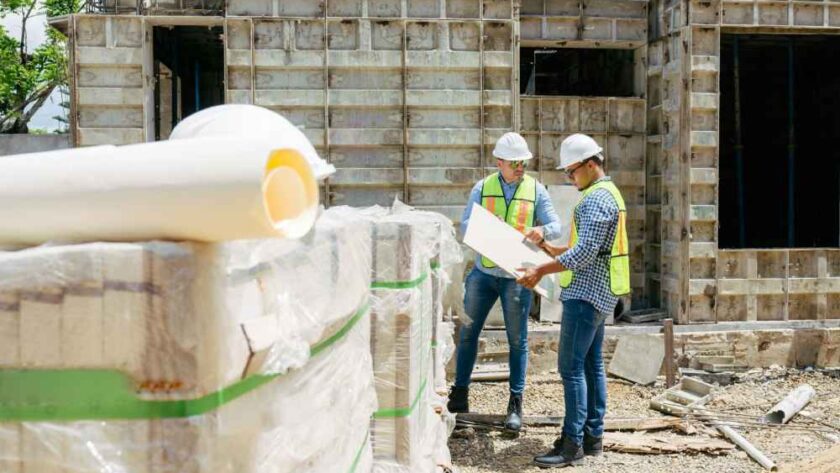Structural integrity is the cornerstone of safe and durable construction. It’s not simply about creating a visually appealing space; the primary goal is building structures that withstand everyday wear and tear and unanticipated natural events. Central to achieving this is the selection of the appropriate building supplies.
By incorporating high-quality materials, builders can significantly reduce the risk of structural failures, ensuring the longevity and safety of the construction. Maintaining structural integrity cannot be overstated, as it protects lives and significant financial investments while complying with building safety regulations.
Contents
The Role of Premium Materials
Premium materials are not mere luxury options but essential components that determine the structural robustness of a building. Materials like reinforced steel, high-grade concrete, and treated timber are examples of products that offer superior performance under stress. A study by ForConstructionPros highlights that using high-quality materials can dramatically enhance a building’s ability to resist natural forces such as earthquakes and high winds.
Furthermore, premium materials often require less maintenance over time than their cheaper counterparts, offering long-term economic and practical benefits. Investing in quality from a reliable building material supplier ensures a resilient architecture that stands the test of environmental stresses and extends the lifecycle of the infrastructure.
Long-term Benefits of Quality Supplies
- Reduced maintenance costs
- Enhanced safety standards
- Increased property value
The decision to opt for high-quality building supplies pays off substantially over time. Buildings constructed with superior materials generally endure longer and necessitate fewer repairs. As a result, maintenance costs are significantly reduced, freeing up financial resources for other priorities. Safety is another critical advantage; robust materials contribute to higher safety standards, lowering the likelihood of accidents or failures and offering peace of mind to occupants.
Additionally, these properties add substantial value to real estate; buyers and investors are often willing to pay a premium for properties known for their durability and lesser future liabilities. An investment in quality is, therefore, an investment in the longevity and profitability of a property.
Environmental Impact of Building Materials
Choosing the right materials is not just a matter of function or aesthetics; it also has a significant environmental aspect. With increasing awareness of environmental conservation, sustainable building practices are becoming a priority. According to Architectural Digest, eco-friendly materials like recycled steel, bamboo, or sustainably harvested wood can drastically reduce a building’s carbon footprint.
Not only does this make the construction process greener, but it also results in more energy-efficient structures, reducing operational costs over time. Sustainable materials support the planet’s and its inhabitants’ health by minimizing harmful emissions and conserving resources, making them a preferred choice for modern builders and developers aiming for eco-friendly certifications and standards.
Choosing the Right Supplier
Once the decision to use premium materials is made, the next crucial step is identifying and choosing a reliable supplier. The right supplier serves as a cornerstone in the construction process, providing materials that meet all specified standards for quality and sustainability. When selecting a supplier, look for certifications, reviews, and a proven track record in the industry.
Verifying that the supplier has a reputation for excellence and integrity is essential, as well as ensuring that every product meets the industry standards and contributes appropriately to the project’s goals. Proactively establishing relationships with reputable suppliers can ensure consistent quality and availability of the desired materials, making the construction process smoother and more predictable.
Future Trends in Building Materials
As the construction industry continues to evolve, innovation in building materials is at the forefront of these changes. The future promises advancements such as smart materials, which can respond dynamically to their environment, offering unprecedented resilience and adaptability.
Materials that can self-repair or change properties in response to environmental cues are close to reality, paving the way for buildings that maintain themselves to a certain extent. These innovations hold the potential to revolutionize building design and functionality, allowing for creations that are not only more resilient but also more sustainable. Keeping an eye on these trends ensures builders are prepared to integrate the latest technologies into their projects, enhancing efficiency, safety, and sustainability.
Wrap Up
In summation, the long-term advantages of using premium building materials are clear. Builders invest in their projects’ safety, durability, and sustainability by prioritizing quality from the outset. This choice benefits individual structures and contributes positively to the broader ecosystem.
Staying informed about the latest advancements and maintaining relationships with reputable suppliers ensures a continuous supply of the best materials available. Ultimately, these practices lead to lasting, impactful constructions that serve their communities well.




